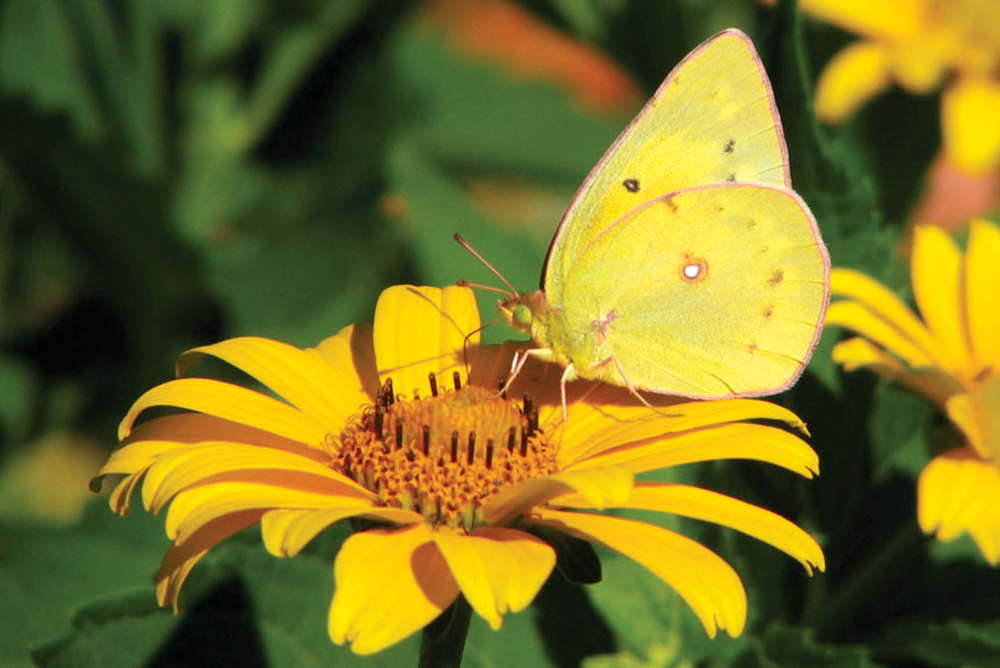Welcoming Wildlife into Your Garden
By Anne Pyburn Craig | Summer 2017 | Features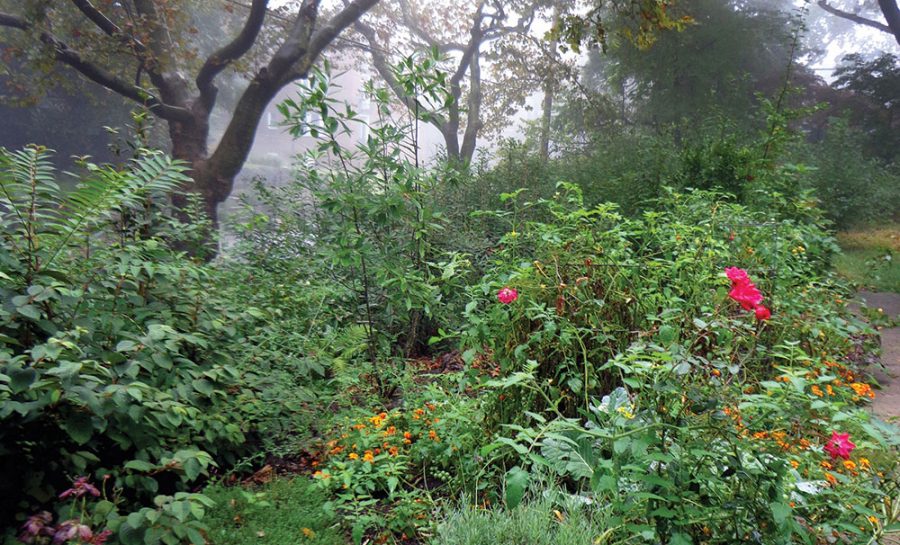
Habitat gardening—using mostly or, better yet, all native plantings in gardening and landscaping—is an act of love. Habitat landscapes teem with life, in stark contrast to traditional green lawns, linear flower beds, and single-species tree lines, which are vulnerable to animals and destructive pests and in constant need of mowing, trimming, and fertilizing.
So why spend hours, or wads of discretionary funds, on a high-maintenance formal garden when you can have contemporary beauty with far less effort, not to mention achieving ecological virtue by supporting natural pollinators. A habitat-oriented landscape is a gift that keeps on giving—both to the gardener and Mother Nature. Here’s how:
Map it
Working with your stretch of earth begins with understanding it. “Do a microclimate map,” suggests international landscape design luminary Margie Ruddick, author of Wild By Design: Strategies for Creating Life-Enhancing Landscapes (Island Press, 2016). Chart the area “from sunny/rocky to shady/clayey,” she says. “Plants fit into discrete niches, not just ‘shady’ and ‘sunny.’ Shady slope with rocky soil will be good for a different selection of plants than a flat, shady area with clay soils.”
And pay attention to the local critters, who will become your allies in the process. Margaret Roach, Columbia County-based author of A Way to Garden (her website and Facebook page of the same name are treasure troves of what she calls “horticultural how-to and woo-woo”), says she learned to garden by heeding the birds. “I started researching what they ate, where they nested and sheltered,” she says. “That guided many plant choices.”
Fortify it
Stay away from chemical pesticides, herbicides, and fertilizers, and opt for organic topsoil and compost. “Healthy soil is pest-resistant,” says Julianne Klasen-Daoud of The Phantom Gardener in Rhinebeck, “which starts with a lot of good compost. Adding a bunch every spring is a great first line of defense.”
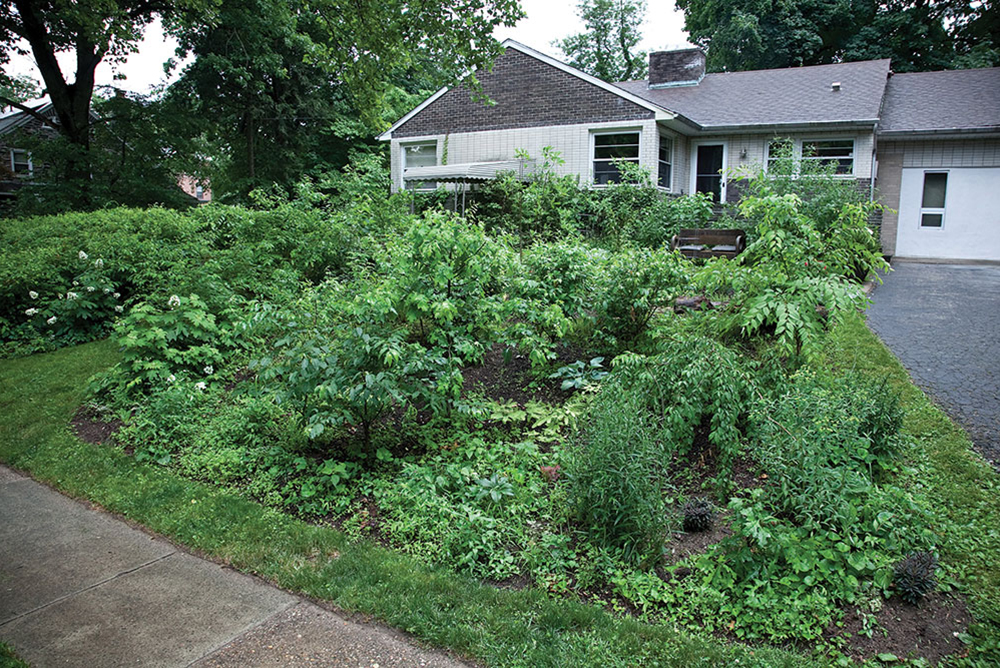
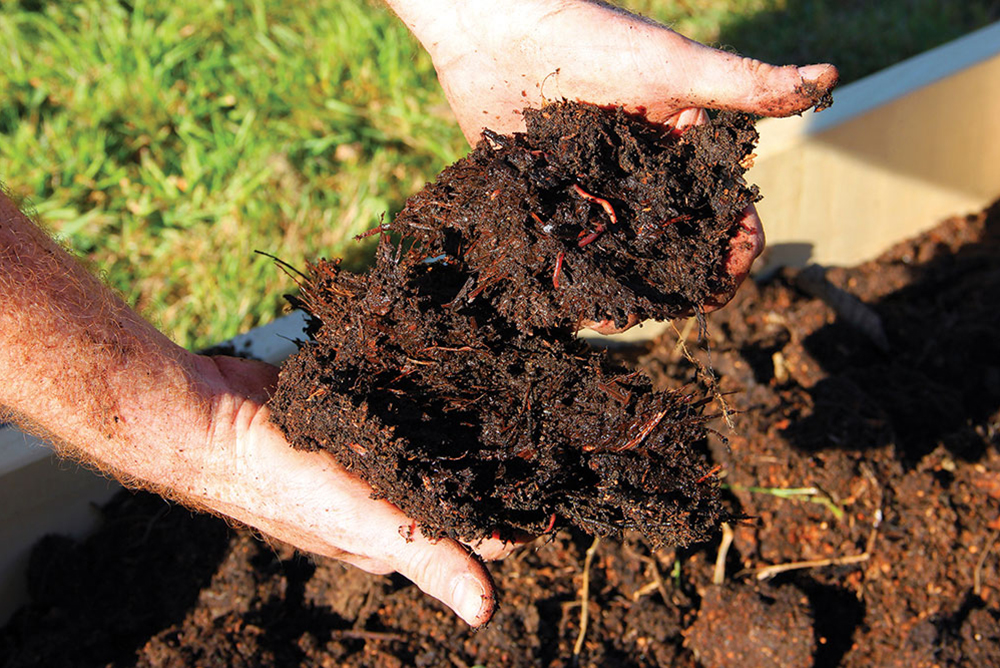
Layer it
Nature produces glorious mixtures, not single-species monocultures, so variety is key to a successful habitat garden. “Layer your plants, from trees to shrubs to tall perennials and grasses, to lower ones and ground cover,” says Ruddick. “A richer matrix provides better cover—it’s not just the pollinator plants, it’s the mix, the community that attracts wildlife.” She suggests grouping plants in “communities.” Begin by assessing what you’ve already got planted, she says, by asking, “Do these plants belong together?” Always group your plants according to their appropriate microclimates, says Ruddick, “and reduce the number of high-maintenance plants, replacing them with plants that do well in those conditions.”
Roach agrees. “I simulated where woods meet field,” she says, “by creating very large shrub islands underplanted with herbaceous things in an otherwise undiverse lawn. Such layers and ‘edge,’ formally called ‘ecotone,’ are where the action is in nature, very food-rich and supportive of many species.”
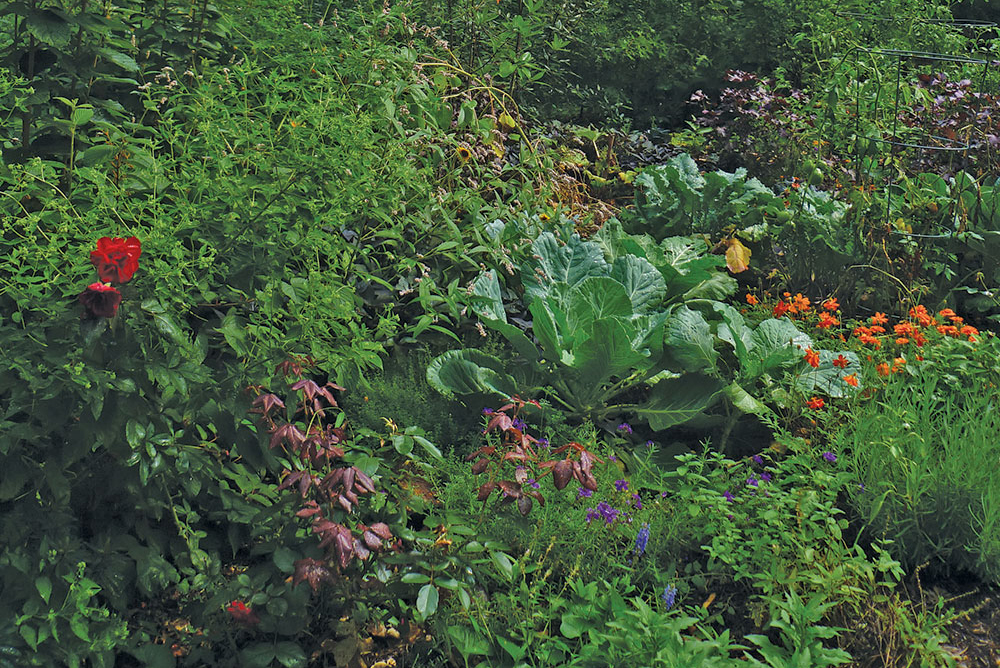
Go native
Along with being biologically adapted to a region’s soil and climate, native plants attract beneficial species and repel destructive ones. Klasen-Daoud names bee balm, milkweed, lobelia, and cardinal flower as Hudson Valley native species that draw bees, butterflies, and birds rather than deer and rodents.
“Some native ‘weeds’ you might cast out of formal beds and borders—like the native impatiens called jewelweed, or clearweed, officially known as Pilea pumila [a cousin of stinging nettle, minus the barbs]—are welcome and important sustenance for key species,” Klasen-Daoud explains. “Stretch the season of pollen/nectar and other food availability—fruit, seeds, even foliage in the case of host plants for caterpillars—as extra early and as extra late as you can: goldenrod and asters on the late end; native woody fruiting plants for early flowers and late fruit double impact, such as chokecherry, blueberry, elderberry, spicebush, native viburnum, and dogwood.”
And don’t forget to water. Ponds, fountains, and/or wetlands are essential to the survival of those beneficial species you want to have as neighbors.
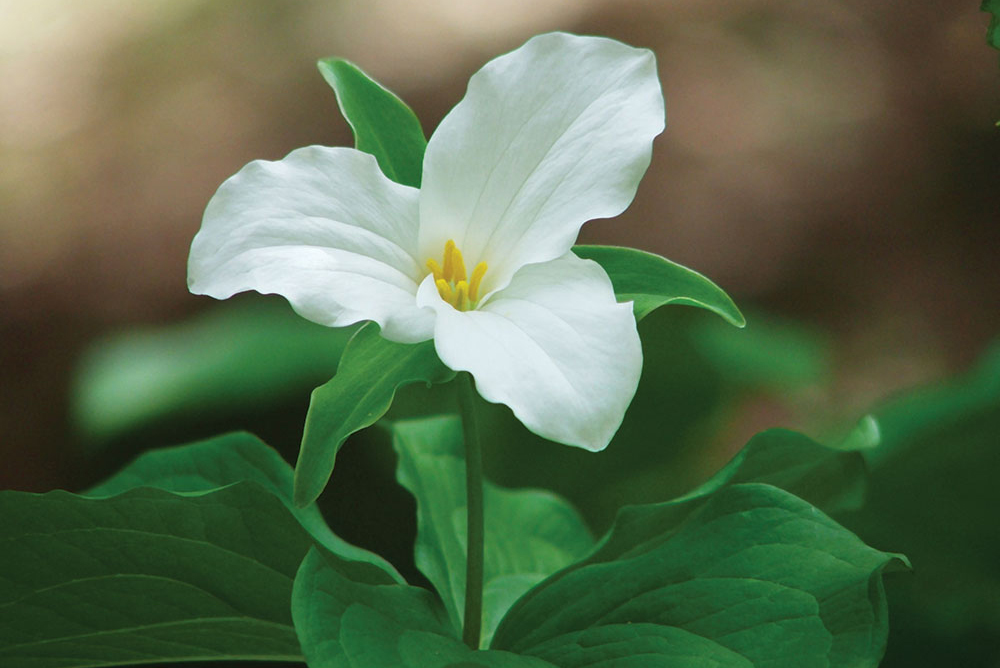
Know your allies
Rather than stocking up on pesticides, get some pest-eaters on your side. Beneficial nematodes, available from garden suppliers, are tiny parasites that feed on specific insect species—you can choose ones that attack ticks, Japanese beetles, grubs, or gnats. Ladybugs, praying mantises, native bees, and honeybees also love to snack on your least favorite bugs.
Watch for invaders
Matching the right hardy native species with the right microclimates makes for far less labor, but you’ll still need to do some tending. “A habitat-style garden is not no-maintenance,” cautions Roach. “Even native shrubs won’t thrive if [they’re getting] strangled by Oriental bittersweet; native perennials can’t outcompete garlic mustard at ground level. You still have to help.” And—sorry—nothing short of a sturdy barrier will keep deer and rodents away from your veggies.
That being said, working with nature makes infinitely more sense than working against it. And watching butterflies always makes for an infinitely better Saturday morning than spending your waking weekend hours pushing or riding on a mower.
